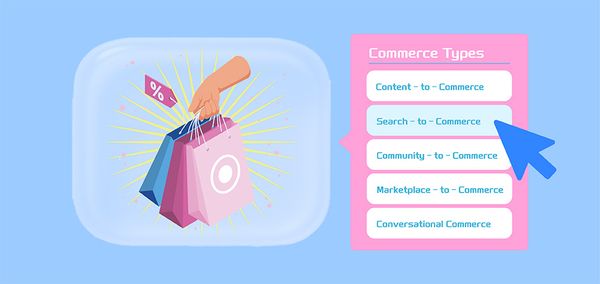What Is a Product Demo & Why Is It Important: Ultimate Guide

In the fast-paced world of business and technology, capturing the attention and interest of potential customers is crucial for success. One powerful tool that companies can leverage to showcase their offerings and drive sales is the product demo. A compelling and well-executed product demo can be a game-changer in the sales process. It has the power to turn potential customers into paying clients by effectively showcasing a product's unique value and capabilities.
What Is a Product Demo
A product demo is a live or recorded presentation that showcases the key features, functionality, and benefits of a product or service. It is designed to give potential customers a firsthand look at how the product works, its capabilities, and how it can address their specific needs and pain points.
Product demos can take on various forms, from in-person demonstrations to interactive online presentations, and can be tailored to suit the needs of different target audiences. Whether it's a complex enterprise software solution or a consumer-facing mobile app, the goal of a product demo is to provide a compelling and informative experience that highlights the product's value proposition and differentiates it from the competition.
Why Product Demos Matter
In the crowded marketplace, standing out and effectively communicating the unique value of your product or service is essential for driving sales and customer acquisition. Product demos play a crucial role in the following aspects.
Educating Potential Customers
A well-designed product demo serves as an invaluable educational tool, giving potential customers a clear and comprehensive understanding of how the product works and the specific problems it can solve. By providing a guided, interactive experience, you can help customers visualize the product in use and how it can seamlessly integrate into their workflow, daily tasks, or lifestyle. This deep level of understanding can effectively overcome any initial confusion or hesitation, making it easier for customers to recognize the true value of your offering.
Differentiating Your Product
In a crowded and competitive market, standing out from the competition and highlighting your product's unique features, functionalities, and benefits is essential. A product demo allows you to showcase these differentiators tangibly and engagingly, helping customers understand why your offering is the best fit for their needs. By emphasizing the specific pain points your product addresses and the unique value it delivers, you can position your brand as the clear solution of choice.
Facilitating the Sales Process
Product demos can be a powerful tool in the sales process, providing a hands-on, interactive way for potential customers to experience the product firsthand. This can help overcome objections, address concerns, and ultimately, move the sales process forward more efficiently. By allowing customers to see the product in action and experience its capabilities, you can build trust, generate excitement, and guide them toward a purchasing decision. The immersive nature of a product demo can be particularly effective in complex or technical products, where a deeper understanding is required to appreciate the full value.

|
Adapt Your Product Prices Automatically DSers Automatic Pricing - Pre-set Pricing Rule to mark-up your product price automatically |
Types of Product Demos in SaaS
In the world of Software as a Service (SaaS), product demos come in various forms, each with its own advantages and use cases. Here are some of the most common types of product demos you might encounter:
1. Live Product Demos
Live product demos offer a dynamic, interactive experience where a sales or customer success representative showcases a product's features and capabilities in real-time. Unlike pre-recorded demos, this format allows for direct engagement with the potential customer, enabling the presenter to tailor the demonstration to address the audience's specific needs and pain points.
During a live demo, the presenter can solicit feedback, answer questions, and engage in a two-way dialogue with the customer, creating a more personalized and responsive experience. This level of interactivity and customization can be particularly valuable in building rapport, addressing concerns, and ultimately, driving the sales process forward. The live demo format provides an opportunity for the customer to see the product in action and experience firsthand how it can solve their unique challenges.
2. Pre-Recorded Product Demos
Pre-recorded product demos are self-contained video presentations that highlight a product's key features and functionalities. Unlike live, in-person demos, these pre-recorded versions can be easily distributed and accessed by potential customers at their own convenience.
This format allows for greater scalability, as the same demo can be shared with multiple prospects without the need for real-time, one-on-one interactions. Pre-recorded demos provide customers with the flexibility to review the product information on their own time, enabling them to absorb the details and capabilities at their own pace. This accessibility and on-demand nature of pre-recorded demos can be a valuable asset in reaching and educating a wider audience of potential customers.
3. Interactive Product Demos
Interactive product demos take the customer experience to a new level by allowing potential users to directly engage with the product in a controlled, test environment. These demos go beyond passive viewing, offering guided walkthroughs and hands-on activities that enable customers to explore and test specific features and functionalities.
This immersive approach provides a more personalized experience, where customers can directly interact with the product and see how it would work in addressing their unique needs and pain points. The ability to actively test drive the product in a sandbox setting empowers customers to gain a deeper understanding of its capabilities and better envision how it could integrate into their workflows or processes. This interactive format can be a powerful tool in driving customer engagement, fostering a stronger connection with the product, and ultimately, accelerating the sales cycle.
4. Product Webinars
Product webinars offer a hybrid approach, blending the broad reach and on-demand accessibility of pre-recorded demos with the interactive elements of live presentations. These webinars feature a live presenter who guides the audience through the product's features and functionality, much like a live demo. However, the webinar format also allows for real-time audience engagement, such as Q&A sessions and the ability for attendees to provide feedback or ask questions.

|
Pre-set the Best Shipping Methods DSers Shipping Settings - Pre-select your favorite shipping method to save money and time |
This combination of a live presenter and interactive elements creates a more personalized and responsive experience, while still maintaining the scalability and convenience of a virtual setting. Product webinars enable businesses to connect with a wider audience, while still fostering meaningful interactions and addressing the specific needs and concerns of potential customers. This versatile format can be an effective way to showcase a product's value, address objections, and move prospects further along the sales funnel.
5. Hybrid Demos
Some SaaS companies have adopted a hybrid approach to product demos, blending elements of both live and pre-recorded presentations to create a more versatile and customizable experience. This hybrid model may involve a live presenter who incorporates pre-recorded video segments into their demonstration, allowing for a mix of real-time interaction and polished, pre-produced content.
Alternatively, the demo may give the audience the ability to seamlessly switch between live and recorded content, based on their specific needs and preferences. This flexibility enables the sales or customer success team to tailor the demo to the audience, providing the benefits of a live, personalized interaction while also leveraging the scalability and consistency of pre-recorded materials. The hybrid approach allows businesses to leverage the strengths of both live and pre-recorded demos, creating a more engaging and effective product showcase that can be adapted to various customer scenarios and requirements.
How to Create a Product Demo
Crafting an effective product demo requires careful planning and execution. Here are the key steps you need to consider.
1. Define Your Objectives
When crafting a product demo, it's important to first define the goals and objectives. Are you aiming to educate potential customers about the product's features and capabilities? Do you want to generate interest and excitement around your offering? Or is the primary goal to support the sales process by providing a hands-on experience that addresses customer pain points?
Aligning the demo with specific, measurable business objectives will help ensure that it delivers maximum impact and contributes to the overall marketing and sales strategy. Factors like lead generation, conversion rates, or customer retention should be considered, and clear success metrics should be established to track the demo's performance.
2. Identify Key Product Features and Benefits
The next step is to determine the most important features, functionalities, and benefits of the product that should be highlighted in the demo. The focus should be on showcasing how the offering can solve the customers' specific problems. Prioritizing the features that address their most pressing needs and provide the greatest value is crucial.
This process begins by mapping out the key use cases and pain points the product addresses, and then identifying the features and capabilities that directly address those needs. This step will help create a demo that is laser-focused on delivering maximum impact and relevance for the target customers.
3. Plan the Demo Structure and Flow
When creating a product demo, it's crucial to carefully plan the structure and flow, ensuring a logical and engaging progression. This may include an introduction to set the context, a walkthrough of key features, a demonstration of real-world use cases, and a clear call to action at the end.
The demo should start with a high-level overview of the product's value proposition, and then dive into the specific features and functionalities that solve the customers' problems. The content should be arranged in a way that guides the audience through a natural exploration of the product, building anticipation and interest along the way. Potential questions or objections should be anticipated and addressed at the appropriate points.
4. Create Impactful Visuals and Interactivity
To make the demo more engaging and memorable, it's important to incorporate visual aids, such as slides, animations, or interactive elements. These visual aids can help bring the product to life and enhance the overall user experience. Incorporating elements like screenshots, videos, or even a live demo of the product can be an effective way to showcase the offering in action. Ensuring that the visuals are clean, consistent, and aligned with the brand identity is crucial.
Additionally, interactive features that allow the audience to actively participate in the demo, such as the ability to navigate through the product, input data, or observe real-time changes, can foster a more immersive and engaging experience for the audience.
5. Incorporate Relevant Data and Testimonials
To enhance the credibility of the product demo, it's important to include relevant data, statistics, or customer testimonials that support the value proposition. This can help build trust and demonstrate the real-world impact of the offering.
Carefully selecting the data points and customer success stories that are most relevant to the target audience and their specific needs is key. Presenting this information in a clear, concise, and visually appealing manner can reinforce the key benefits and differentiate the product from the competition.
6. Practice and Refine
When it comes to crafting a compelling product demo, thorough practice and continuous refinement are key. It's crucial to practice the demo extensively, gather feedback from colleagues or beta testers, and make the necessary adjustments to ensure a smooth, polished, and impactful presentation.
The focus should be on optimizing the timing, flow, and clarity of the messaging to provide the best possible experience for the audience. Any areas that may be confusing, overly complex, or lacking in necessary information should be identified and refined. By practicing the delivery multiple times and closely observing the audience's reactions, the presenter can make iterative improvements to ensure that the final product demo is of the highest quality.
Conclusion
Product demos can help businesses communicate the unique value of their offerings, differentiate themselves from the competition, and facilitate the sales process effectively. By following the steps we mentioned above, you can create a compelling and informative product demo that resonates with your target audience and drives tangible business results. Remember to stay adaptable and continuously refine your approach based on feedback and market changes.












 Company
Company
 Why Choose DSers
Why Choose DSers
 Blog
Blog
 Help Center
Help Center




 Live Chat
Live Chat